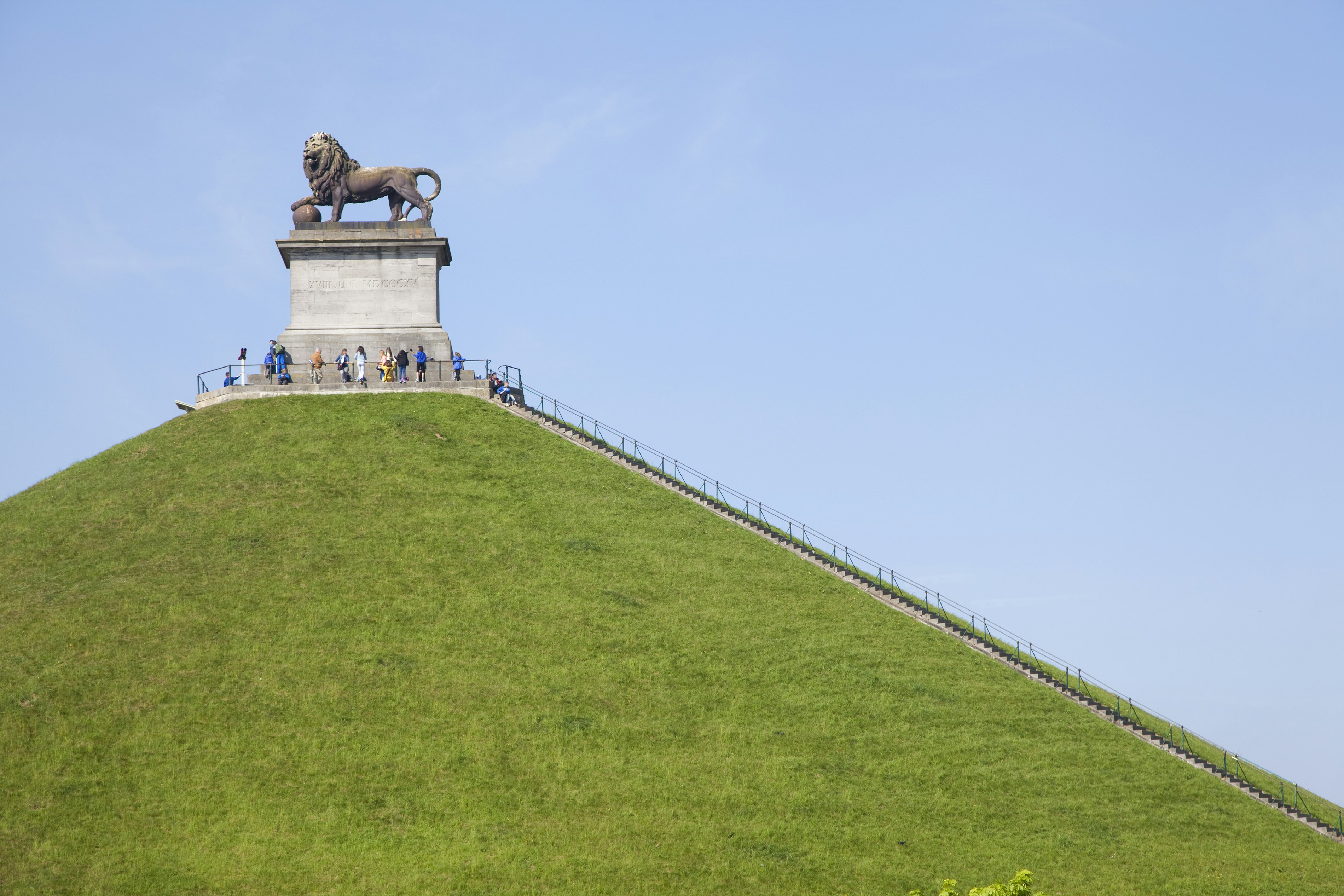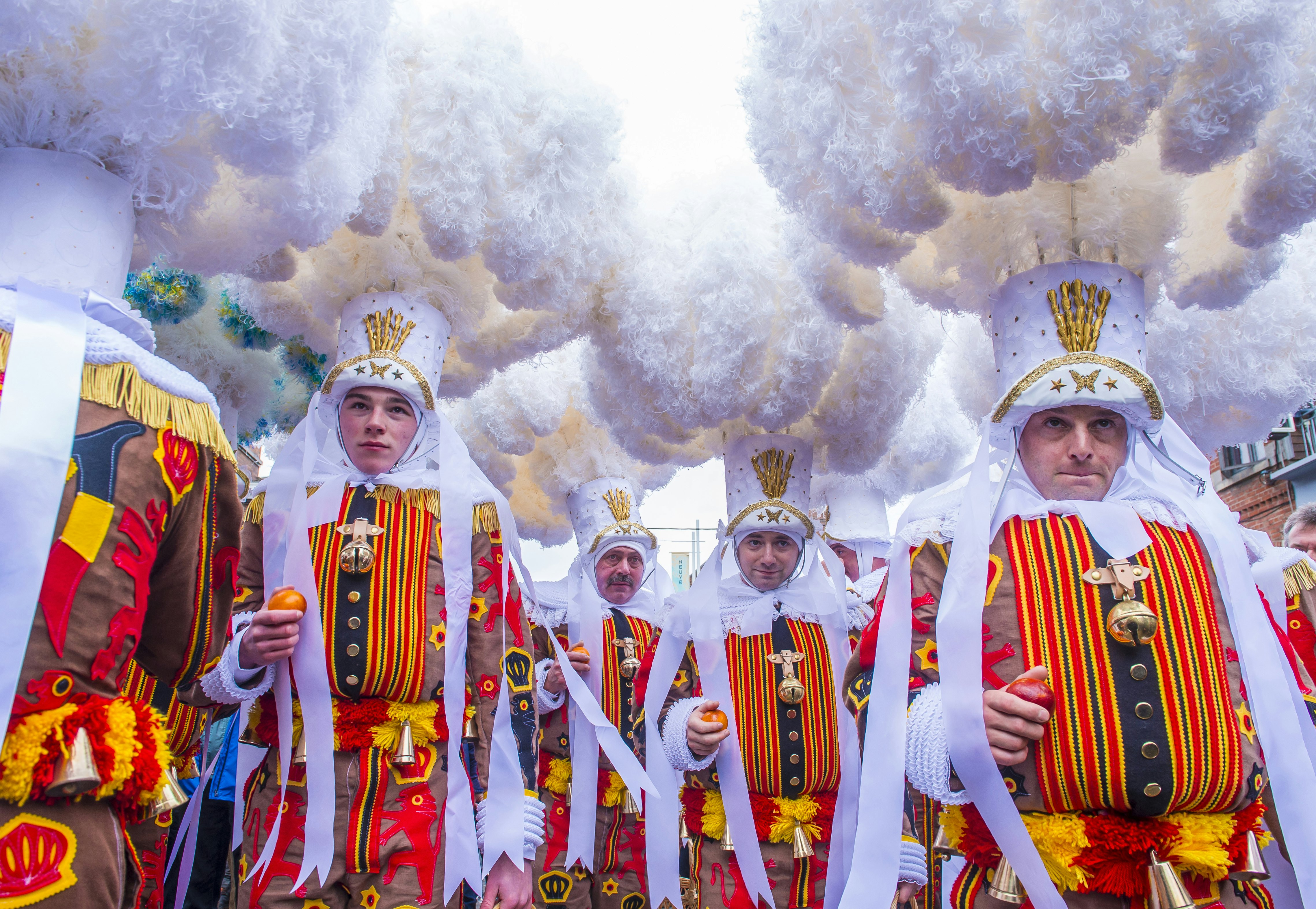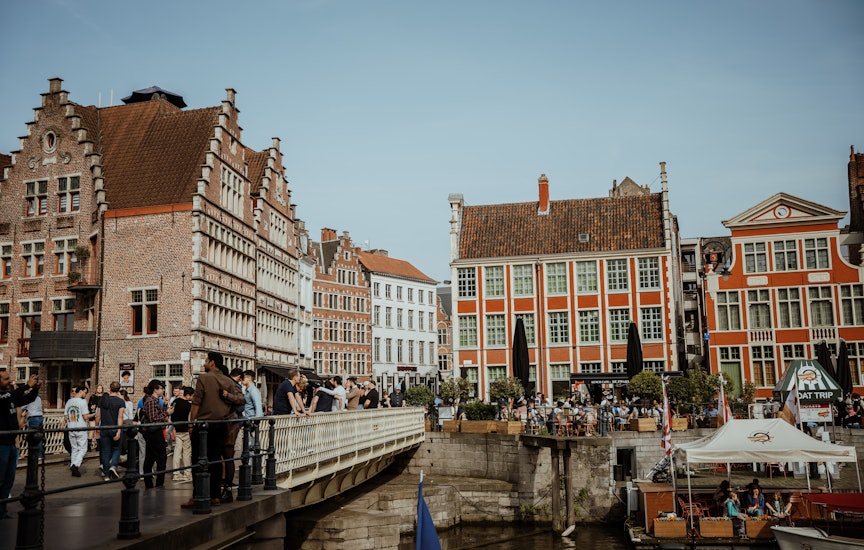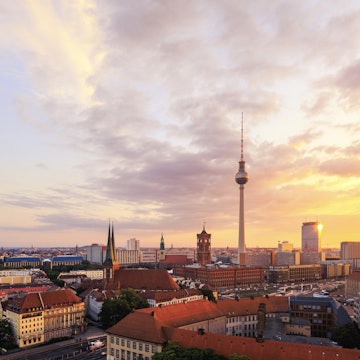

Despite Belgium's small size, you'll find plenty to discover on a road trip © Matt Munro / Lonely Planet
Chips, chocolate and the world’s best beers are just the start in Belgium, which packs several of Europe’s most enthralling historic cities into its compact borders.
It’s hard not to be entranced by the majestic Grand Place of Brussels, the quirky brilliance of Ghent, the fashionably reinvented Antwerp and the dreamy canals of Bruges.
However, all of those big hitters work determinedly to keep cars out, using low emission zones (LEZ), limited parking and deliberately confusing one-way systems to frustrate drivers.
It’s best to visit those cities by public transport – park and ride is well-organized. Save your vehicle for the whole gamut of less prominent Belgian marvels where having wheels is, contrastingly, ideal.
Distances are relatively short, and what makes things interesting more than the sometimes-forgettable scenery is the close-packed attractions that driving your own vehicle allows you to access.
Here’s our guide to the best road trips in Belgium.

1. Napoleon’s final defeat
Best for Napoleonic history
Waterloo to Waterloo; 20km (13 miles); one long day
On June 18, 1815, the most famous battle in European history was fought on sloping, rain-soaked fields some 5km (3 miles) south of the Belgian town of Waterloo.
Brussels was “saved” from re-capture by the French, and the battle marked the final defeat of Napoleon, who until then had been seen as the greatest military leader of the era. Even today, the term “meet one’s Waterloo” means to encounter one’s ultimate obstacle and be defeated by it.
The fields on which nearly 50,000 died on that single day are now marked by numerous monuments, most famously the Lion Mound, a 43m (140ft) tall conical hill topped by a 2-tonne bronze lion.
Beside it is a fabulous, subterranean visitor center that could occupy you for hours, explaining facets of the battle and its context. Having a car lets you combine this with several other battle-related sites, with Waterloo as the starting point.
From the visitor center, it’s 1.2km (0.7 miles) to Mont St-Jean farmhouse, a mini-museum about Napoleonic battlefield medicine. There’s a brasserie-restaurant at the farmhouse that’s far better than cafes at the main site.
Another 3km (1.9 miles) south, past several more battle memorials, is Le Cailou, a museum in the house where Napoleon slept before the battle. From Le Cailou return north via Plancenoit, a small village with a memorial commemorating the heroic Prussian troops who saved the day in a lesser-known skirmish.
Finish the drive back to Waterloo. In the center of town is the former inn (now a museum) from which Wellington wrote home reports of his victory.
Planning tip: Parking is free at all the sites. Painfully slow buses do run from Brussels to Waterloo and continue to the battlefield visitor center. However, other sites are hard to reach without wheels and the free parking in Waterloo means it’s better to visit Brussels from Waterloo than vice versa.
Ready to plan your trip to Belgium? Choose when to go with our seasonal guide

2. The Eastern Flanders loop
Best for medieval charm and Roman resonance
Leuven to Tongeren then back via Hasselt; 210km (130 miles); 3 days
Foreign visitors in Flanders tend to concentrate on the west and center: not surprising given the magnetic appeal of Bruges, Ghent, Antwerp, Mechelen and Lier, plus the fine beaches around Knokke.
However, the east has many delightful yet little visited historic cities of its own which, in any other country, would be major attractions. Start in Leuven, the great university city of Flanders, home of Stella Artois, the "world’s longest bar" and the beautiful statue-encrusted medieval city hall.
Heading southeast, stop at sugar-city Tienen (Tirelemont in French) with an expansive central square and two fine churches, then divert south to Hoegaarden, famed for beer but also charming for its hilltop gardens, bandstand and fine church.
At little Zoutleeuw, east of Tienen, the town hall, cafes and especially the UNESCO-listed 13th-century Sint-Leonarduskerk are all fairy-tale structures. Stop in Wilderen for a drink at Brouwerij Wilderen, a buzzing brew-cafe-restaurant in a beautifully repurposed historic barn, then discover cosmopolitan Sint-Truiden (St Trond in French) with a plethora of attractions around its majestic central square.
Check opening and performance times before heading out to Festraetsmuseum. Here a time-warp collection of still-working 1930s mechanical contraptions include a bell chime rung by a skeleton and an almost comically naive steamship departing for New York – all built without any advanced electronics. The museum is in Sint-Truiden’s sleepy Bejijnhof quarter.
The next stretch of road is particularly pretty amid undulating orchards and patchworked woodlands with several castles around Borgloon.
You’ll have to park and walk around 15 minutes between the fruit trees to find a dinky “chapel” called Reading between the Lines. It’s made from stacked metal slats with air gaps that are so arranged that it seems to half disappear when viewed from different directions, especially at sunset.
Spend the night and much of the next day in architecturally charming Tongeren, with Roman wall remnants, a superb museum focusing on Gallo-Roman history, excellent boutique hotels and two Michelin-starred restaurants.
After lunch on the second afternoon, drive north, crossing the wide Albert Canal on the 1930s Diepenbeek locks to reach Bokrijk.
Here, you’ll need a couple of hours to get a taste for Belgium’s finest open-air museum and afterward, don’t miss nearby Cycling Through Water, a playful 21st-century cycle-path construction where – from certain angles – cyclists appear to be doing just that.
Sleep in Hasselt, a city famed for its jenever (Flemish gin) and remarkable selection of fine-dining options (two with Michelin stars) in the patchily historic old town core. Then return west via Diest, a historic town with the region’s most marvelous begijnhof (self-contained medieval village, originally for unmarried women who didn’t want to become nuns).
En route back to Leuven make a 5-minute stop in the old-fashioned Catholic pilgrimage town of Scherpenheuvel with its distinctive star-studded basilica dome and 1960s-flashback store selling religious kitsch. Have dinner at the Wagenhuis facing the picture-perfect rural castle of Horst.
Planning tip: Both Tongeren and Hasselt have excellent boutique hotels and Michelin-starred restaurants. Be sure to book ahead to guarantee a spot.
Looking for more things to do? Here are Belgium's top experiences

3. The caves and castles route
Best for fortifications and underground adventures
Namur to Liège; 225km (140 miles); 2 or 3 days
Belgium has 3000 castles, from moated medieval marvels to brooding hilltop fortresses. This route also takes you through the Famenne-Ardenne Geopark, a UNESCO-listed area full of spectacular caves, many of which you can visit given the transport to get there.
Drive south following the River Meuse through the town of Wépion, passing several chateaux and lovely Yvoir villages en route to dramatic Dinant, where Citadelle de Dinant sits on a cliff above the oversized bulb-nosed Église Notre-Dame church.
Cut across the country via Lavaux Ste-Anne with its moated low-rise courtyard castle, to Han-sur-Lesse whose caverns are Belgium’s best known subterranean attraction and a visitor experience that starts with a rickety train ride.
Han is easy for drop-in visitors due to relatively frequent tour slots, but if you time things well (pre-booking is the best option) you might prefer to continue to the lesser-known cave systems at Lorette/Rochefort or Hotton, where visits feel more like explorations.
Rochefort, famed for its eponymous Trappist beer, also makes a charming place to stay overnight. For more accommodation choices, head to Durbuy – Belgium’s “smallest city” – a quiet place in the offseason but a little tourist-choked on summer weekends with families flooding to the nearby Adventure Valley activities park.
The next day, wind across the pretty wooded hills via Ocquier to Modave whose château is one of Belgium’s grandest. In contrast the fortress at Huy, further north, is a sombre, powerful brute but its WWII history is enthralling – PG Wodehouse was incarcerated here for a while – and the views alone are well worth the cable car ride up (open April to October).
From Huy head northeast to Jehay, home to one of Belgium’s loveliest if least-visited moated castles with a gingerbread checkerboard effect in its brickwork. Then take the motorway back to Namur or on to outwardly ugly but vibrantly fascinating Liège.
Planning tip: Even if the weather is hot, bring some warm clothes to wear when visiting the cave systems. You’ll likely be underground for an hour or more and temperatures are cool year round.

4. WWI Route
Best for WWI history and beer
Nieuwpoort to Diksmuide via Ypres (Ieper); 95km (60 miles); allow at least 2 days
This route takes you to key WWI sights and reconstructed medieval town centers once bombarded to rubble during the war. Start on the coast at Nieuwpoort, with its attractive center and busy yacht harbor.
Drive through the medieval city of Veurne and drop in at St Sixtus Monastery. The monks here brew Westvleteren 12, often rated the world's best beer and certainly one of the hardest to find. Taste it (cautiously!) at the in-house cafe, In de Vrede.
Drive on south through hop fields to the brewing town of Poperinge, where the Talbot House retells stories of the WWI British front line. The town hall has eerie execution cells that dealt ruthlessly with shell-shocked deserters.
East of Poperinge, in central Ypres (Ieper), the astounding Lakenhalle (cloth hall) is one of the world's finest medieval buildings. Yet it was entirely rebuilt following WWI after being bombed to bits. It now hosts a fabulous In Flanders Fields museum that covers the war through personalized storytelling. The mournful Last Post is still sounded every evening at 8pm. The next day you’ll be glad of the car to make sorties into the Ypres Salient, a rural patchwork of war graves, preserved trenches and museums.
There are dozens of choices but if picking just a couple, don’t miss the trench remnants at Sanctuary Wood, the Passchendale 1917 experience at Zonnebek and the vast Tyne Cot cemetery commemorating thousands of fallen commonwealth soldiers. Return to the coast via Diksmuide whose 83m-tall (272ft), 22-storey IJsertorer is both a WWI memorial and a potent symbol of Flemish identity.
Planning tip: If you are looking for a specific memorial or grave of an ancestor/relative, start by searching CWGC (British/Commonwealth), ABMC (American), Mémoire des hommes (French) or Volksbund (German).
Check out our guide for more unmissable places in Belgium

5. The Semois Valley route
Best for quiet countryside and idyllic river views
Bouillon to Vresse; 45km (28 miles); 1 day
The modest mountains of the Ardennes are often visited by WWII fans, intrigued by the Battle of the Bulge around Bastogne, and by extreme cyclists drawn to the castle town of La Roche-en-Ardenne.
Drivers seeking quaint rural charm need to select routes carefully as many of the region’s roads pass for mile upon mile through swathes of dark pine forest that can lack much in the way of interest. Choose this contrastingly scenic route to visit several of the region’s corners and viewpoints.
Begin the route in Bouillon – Belgium’s most atmospheric castle town, especially just after dusk when Château de Bouillon reflects in placid river waters. Start early with a short out-and-back drive along the Semois River past Cordemois Abbey to Moulin de l’Epine for pretty river views and some lovely woodland walks.
Return to Bouillon and loop via Ucimont to the Botassart viewpoint to look down upon the same beautiful curl of river, known as the Tombeau de Géant (Giants Tomb).
The next stop is Rochehaut where the tavern-cafe is a fine place for lunch and serves its own beers. At Rochehaut a panoramic terrace stares down across another beautiful curl of the Semois, but this time with the village of Frahan gracing the tongue of projecting land.
Further west, riverside Alle has more cafes and is a popular kayaking base. A winding lane leads across the hills to Vresse-sur-Semois, one of the Ardennes most arty villages where, at the sub-hamlet of Laforêt, the Pont des Claies is Belgium’s last example of a seasonally reconstructed braided bridge.
Planning tip: The Ardennes is not equally pretty. Though there are other quaint corners not covered in the route above, and there’s a barren beauty to the Hautes Fagnes area, many of the region’s roads pass for mile upon mile through swathes of dark pine forest with little scenic variation.

6. The four-carnival route
Best for exuberant celebrations
Malmédy to Aalst; 265km (165 miles); 3 days
All of the towns on this curious backwards N-shaped route are underrated curiosities in their own rights and worth visiting at any time. However, what makes this route special is that, once a year – if you time things perfectly – you could take part in four Belgium carnivals in the space of three days.
The weekend before Lent (generally sometime in February), start in Malmédy and be part of the city’s Sunday Cwarmê Carnival whose 2pm parade features a complex cast of characters, including the photogenic if ununnervingly cheeky Longs Nés with their anonymous masks and upturned Pinocchio noses.
Early the next morning, head out of a scenic drive across the bleak fenlands of the Hautes Fagnes to Eupen, Belgium’s most culturally German city. The highlight of Eupen’s Rosenmontag (Rose Monday) carnival is the good-humored parade, often with pointedly satirical elements.
Once that’s over, jump in the car and dash west towards Binche, possibly saving money by sleeping in one of the inexpensive motels around nearby La Louvière. Arrive in Binche as early as you can – this town lives for carnival and is home to a superb carnival museum with wonderful costumes and masks from all over the world.
The famous Mardi Gras parade is mid-afternoon, but arguably the most intriguing element of the age-old celebration comes early morning as groups of the fabled Gilles de Binche (elaborately costumed celebrants) perform circle dances in the main square wearing spooky face-masks.
In the afternoon, wind permitting, the Gilles don their long feathered headgear for a stomping march through town. However, a great alternative is to jump in the car before that and drive due north to Aalst.
You’ll have missed the Monday afternoon’s onion-throwing antics there but Aalst’s Shrove Tuesday afternoon parade is one of the world’s most comical public farces full of cross-dressing and merriment.
Planning tip: To make the most of this itinerary, start in Malmédy on the weekend before lent, ie six weeks before Easter Sunday such that you catch the main aspects of the four carnivals (Malmédy on Sunday afternoon, Eupen Monday afternoon, Binche early Tuesday morning and Aalst Tuesday afternoon). Binche carnival is internationally known so accommodation there will be tough (stay near La Louvière) but the other carnivals are primarily local events so finding a place to stay nearby isn’t necessarily difficult.
Traveling through Belgium on a budget? Here are our money-saving tips















